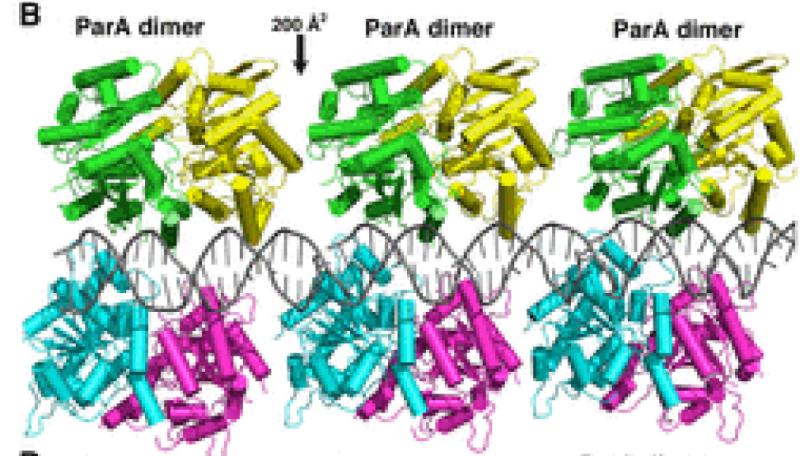
The propagation of genetic material from one generation to the next, termed DNA segregation, is essential for all life and is one of the most fundamental of biological processes. So-called Walker-box ParA-ParB systems are arguably the most ubiquitous DNA segregation systems in nature, employed by bacterial and archaeal chromosomes and plasmids. However, their mechanism has been unclear. Also, it has been under debate whether the ParA protein polymerizes on DNA to mediate segregation. The Schumacher lab describes work revealing the first structures of the ParA Walker-box protein bound to nsDNA and its effector protein, ParB and complementary biochemical and cellular studies that together reveal the molecular principles governing this process. Specifically, the studies dispel the notion that polymers are utilized and instead show how harnessing a conformationally adaptive ParA dimer can drive large-scale cargo movement without the requirement for polymers, revealing a DNA segregation mechanism whereby ParA-ATP dimers equilibrate to specific DNA sites near the cell poles to mediate equipartition of replicated DNA substrates. (Zhang and Schumacher, Genes Dev, 2017)